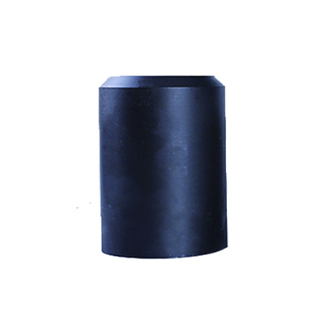- Afrikaans
- Albanian
- Amharic
- Arabic
- Armenian
- Azerbaijani
- Basque
- Belarusian
- Bengali
- Bosnian
- Bulgarian
- Catalan
- Cebuano
- Corsican
- Croatian
- Czech
- Danish
- Dutch
- English
- Esperanto
- Estonian
- Finnish
- French
- Frisian
- Galician
- Georgian
- German
- Greek
- Gujarati
- Haitian Creole
- hausa
- hawaiian
- Hebrew
- Hindi
- Miao
- Hungarian
- Icelandic
- igbo
- Indonesian
- irish
- Italian
- Japanese
- Javanese
- Kannada
- kazakh
- Khmer
- Rwandese
- Korean
- Kurdish
- Kyrgyz
- Lao
- Latin
- Latvian
- Lithuanian
- Luxembourgish
- Macedonian
- Malgashi
- Malay
- Malayalam
- Maltese
- Maori
- Marathi
- Mongolian
- Myanmar
- Nepali
- Norwegian
- Norwegian
- Occitan
- Pashto
- Persian
- Polish
- Portuguese
- Punjabi
- Romanian
- Russian
- Samoan
- Scottish Gaelic
- Serbian
- Sesotho
- Shona
- Sindhi
- Sinhala
- Slovak
- Slovenian
- Somali
- Spanish
- Sundanese
- Swahili
- Swedish
- Tagalog
- Tajik
- Tamil
- Tatar
- Telugu
- Thai
- Turkish
- Turkmen
- Ukrainian
- Urdu
- Uighur
- Uzbek
- Vietnamese
- Welsh
- Bantu
- Yiddish
- Yoruba
- Zulu
6 Inch Well Casing Coupling Specifications and Applications for Drilling Industry
Understanding 6 Inch Well Casing Couplings A Comprehensive Overview
In the field of drilling and well construction, well casing is an essential component that plays a critical role in maintaining the integrity of the wellbore. Among various casing sizes, the 6 inch well casing is particularly common due to its versatility and effectiveness in a myriad of applications. Integral to the installation and maintenance of these casings are the well casing couplings, which serve a pivotal purpose in connecting sections of casing together.
What is a Well Casing?
Well casing refers to the pipe that is installed in the wall of a newly drilled well. Its primary function is to provide support to the well walls, preventing the surrounding soil or rock from collapsing into the borehole. Additionally, casing helps to isolate groundwater resources, reducing cross-contamination between different aquifers and maintaining the quality of the water supply.
The Role of Couplings
Couplings are fittings used to connect two or more sections of well casing. In the case of a 6 inch well casing, couplings are particularly critical because they ensure that the casing sections fit tightly together, which is essential for preventing leaks and maintaining the structural integrity of the well. Couplings are typically manufactured from materials that match the casing pipe, such as carbon steel or stainless steel, providing durability and resistance to corrosion.
Types of Couplings
There are various types of couplings available for 6 inch well casing, each designed for specific applications
. Some of the most common types include6 inch well casing coupling

1. Threaded Couplings These are known for their ease of installation. The threads allow for a secure connection between the casing sections, reducing the chances of leakage.
2. Welded Couplings For applications requiring a stronger connection, welded couplings are typically used. This method involves fusing the casing sections together to create a seamless joint. While this requires specialized equipment and training, it results in a robust connection ideal for high-pressure conditions.
3. Slip-On Couplings These couplings are designed to slip over the ends of two casing sections. They are often used in situations where welding is not feasible. Although they don’t provide as tight a seal as threaded or welded couplings, they are easier to install and can accommodate minor discrepancies in casing alignment.
Installation Considerations
When working with 6 inch well casing couplings, several factors must be taken into account to ensure proper installation and functionality. The type of soil, water pressure, and environmental conditions can all impact the choice of coupling. Additionally, it is essential to select couplings that are compatible with the specific casing materials and dimensions to guarantee a snug fit.
Before installation, proper cleaning and inspection of the casing ends are crucial. Any debris, rust, or coating can prevent a proper seal. Furthermore, it is critical to follow manufacturer guidelines during installation to avoid compromising the well’s structural integrity.
Conclusion
In summary, the significance of 6 inch well casing couplings cannot be overstated. They not only facilitate the assembly of casing sections but also ensure the well’s functionality and safety. Understanding the different types of couplings, their installation, and various considerations can greatly enhance the efficiency and effectiveness of well construction practices. With the correct implementation, 6 inch well casing and its couplings can contribute to sustainable water resource management and drilling operations, ultimately aiding in the preservation of vital groundwater supplies. Whether for residential, agricultural, or industrial applications, attention to detail in the use of casing couplings will lead to long-lasting and reliable well systems.
-
Tubing Pup Joints: Essential Components for Oil and Gas OperationsNewsJul.10,2025
-
Pup Joints: Essential Components for Reliable Drilling OperationsNewsJul.10,2025
-
Pipe Couplings: Connecting Your World EfficientlyNewsJul.10,2025
-
Mastering Oilfield Operations with Quality Tubing and CasingNewsJul.10,2025
-
High-Quality Casing Couplings for Every NeedNewsJul.10,2025
-
Boost Your Drilling Efficiency with Premium Crossover Tools & Seating NipplesNewsJul.10,2025







